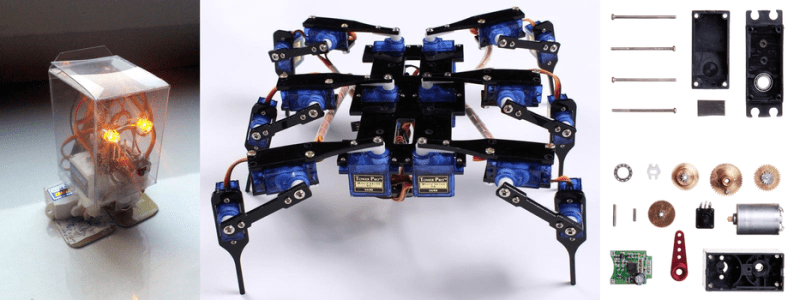Community, Leadership, Experimentation, Diversity, & Education
Pittsburgh Arts, Regional Theatre, New Work, Producing, Copyright, Labor Unions,
New Products, Coping Skills, J-O-Bs...
Theatre industry news, University & School of Drama Announcements, plus occasional course support for
Carnegie Mellon School of Drama Faculty, Staff, Students, and Alumni.
CMU School of Drama
Friday, March 25, 2016
Hackaday Dictionary: Servo Motors
Hackaday: How do you make things move? You add in a motor that converts electrical energy into motion. That’s a simple idea, but how do you know where the motor is? That’s where the servo motor comes in. By adding a sensor and a controller to the mechanism, these motors can figure out how far they have rotated and maintain that setting without any need for external control.
Subscribe to:
Post Comments (Atom)

2 comments:
This article actually happens to be quite relevant to my current situation. Normally, I would never use a servomotor in any of my day to day applications; however the project that I am currently working on calls for it. The great thing about these low-voltage motors is the torque that is available. I am able to lift upwards of three pounds with a devices that can be powered by the arduino directly. Three pounds might not seem like a lot of weight, but compared to its size it is actually amazing. This article comes at a good time because being able to understand all the tricks about these motors allows me to advance my current class project.
One of the biggest problems that I faced with my servomotors was not being able to make continuous revolutions. The coolest trick I found is that you can make slight modifications to the gears allowing them to spin 360 degrees. It might not be the easiest thing to do but it allows you to do so much more with the motor. Sadly, one sacrifice of using this type of motor is that the gearbox is designed using mechanical advantage to increase tordue, but as you increase torque you lose speed.
If I’m not mistaken, a servomotor is a small gearmotor with a potentiometer built into it. I always understood the basics of motors and gears and how they work, but I am glad that I am learning more about it. The topics we’ve covered in Kevin’s machine design class helped me to understand more of what this article is saying. I had to say it, but this article makes me question when the Mythbusters said they were using servos or servomotors. It seems like most generic servos only have 180 degrees of operation, which doesn’t seem like a lot. Although, the Mythbusters probably weren’t generic servos. I could see small motors like this for doing “magical” tasks in theater like making blinds open and close on their own or to create your own record player. This article also answers some of the question I had about motor drives and control, but on a smaller scale than what we would use for stage machinery.
Post a Comment